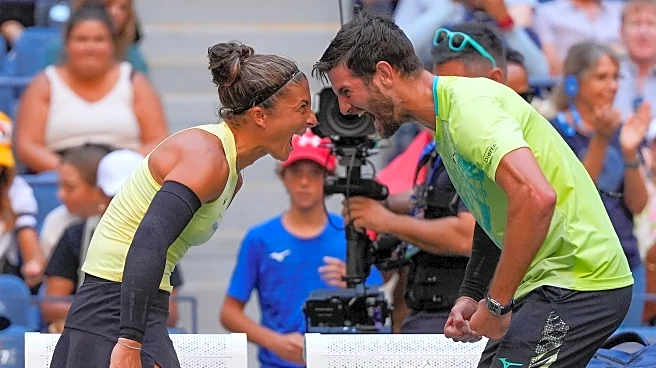What's Happening?
The US Open has introduced a controversial new format for its mixed doubles tournament, aiming to attract top singles players. The event, condensed into a two-day format, features 16 pairs competing for a $1 million prize. The format change has drawn criticism from doubles specialists, who feel it resembles an exhibition rather than a Grand Slam-worthy competition. The tournament is designed to avoid interfering with singles players' rest and recovery, but has raised concerns about the exclusion of dedicated doubles players.
Why It's Important?
The revamped format represents a significant shift in how mixed doubles are perceived and organized at Grand Slam events. By attracting high-profile singles players, the US Open aims to increase viewership and engagement, potentially setting a precedent for other tournaments. However, the changes have raised concerns about the devaluation of traditional doubles competitions and the exclusion of dedicated doubles players from significant prize money opportunities. The controversy highlights the tension between commercial interests and preserving the integrity of tennis traditions.
Beyond the Headlines
The format change raises ethical questions about the balance between commercial interests and the preservation of sports traditions. The exclusion of doubles specialists from the tournament could impact their career opportunities and financial stability. The controversy may lead to broader discussions within the tennis community about the future of mixed doubles and the role of Grand Slam events in promoting diverse formats. Stakeholders, including players and organizers, will likely continue to debate the implications of such changes on the sport's future.












